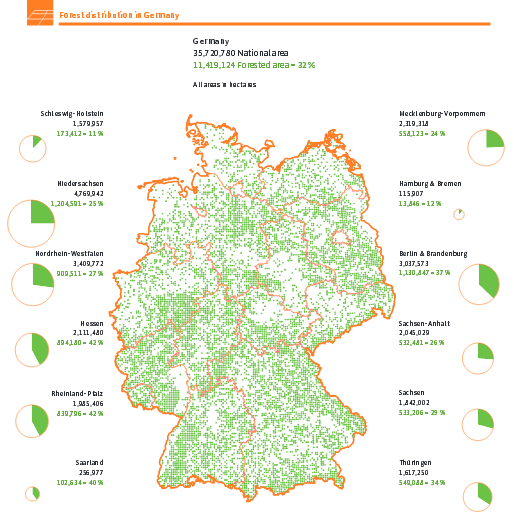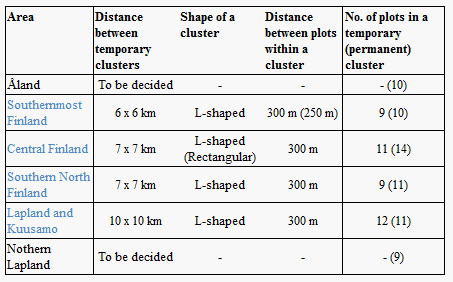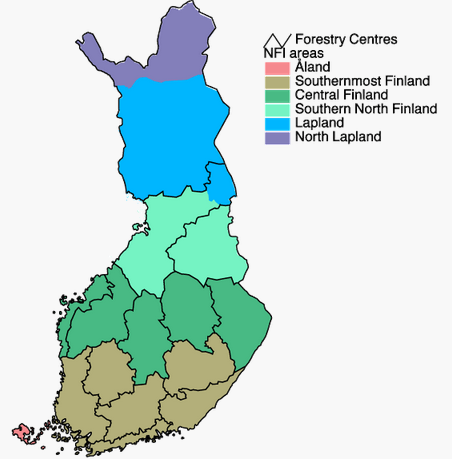International Outlook
As the first nationwide management plan including taking stock of the nation's forests dates back to over a hundred years ago when Act XXXI of 1879 took effect, the assessment of forest resources also has a long standing history in other European countries.
Germany, for instance, launched the first forest survey in 1892. Systematic forest resource assessment has been carried out since 1986 and the third inventory cycle to come after 2002 was completed in 2012. The sampling grid is composed of 4 × 4 km squares with permanent sampling points. Sampling occurs are the corner points of 150 × 150 m squares known as tracts fitted on nodes of the sampling grid. Most recently, over 54,000 sampling plots were surveyed at 18,800 tracts recording 375,631 sample trees of 72 species.

Source: The Forest in Germany, Selected Results of the Third National Forest Inventory, 2015. Federal Ministry of Food and Agriculture
For further information see: https://www.bundeswaldinventur.de
Finland conducted her first national statistic forest inventory between 1921 and 1924, which makes it one of the first launched even in global comparison. The most recent sampling cycle, the 11th in a row, was completed on terrain between 2009 and 2013.
Due to the difference in forest density and stand size, Finland uses different sampling grids for different areas of the country.
This series of descriptions could be continued with a brief overview of and references to national statistical forest inventories. Like Hungary, several countries adopt a mixture of forest planning/forest management planning and taking statistical forest inventory (e.g. Slovakia and Romania). For further information and help about the topic, please visit the following websites:
http://forestportal.efi.int/listg.php?c=FI
Although the EU has no single forest policy, a common strategy has already been laid out. Just as national governments find reliable national level information indispensable in their economic, political and environmental decisions relating to forests, the EU cannot do without a harmonised EU wide database of the required accuracy. The latter can draw on national statistical forest inventories.
The cooperation pursued in the framework of a common organisation, the European National Forest Inventory Network (ENFIN) illustrates the importance of statistical forest inventories, the aspiration to harmonise methods and data reporting and asserting the opportunities presented by common representation. Hungary is also a member of ENFIN, and several joint projects mark the successful cooperation with the Network.
For further information see: http://193.170.148.89/enfin/organ1.html

